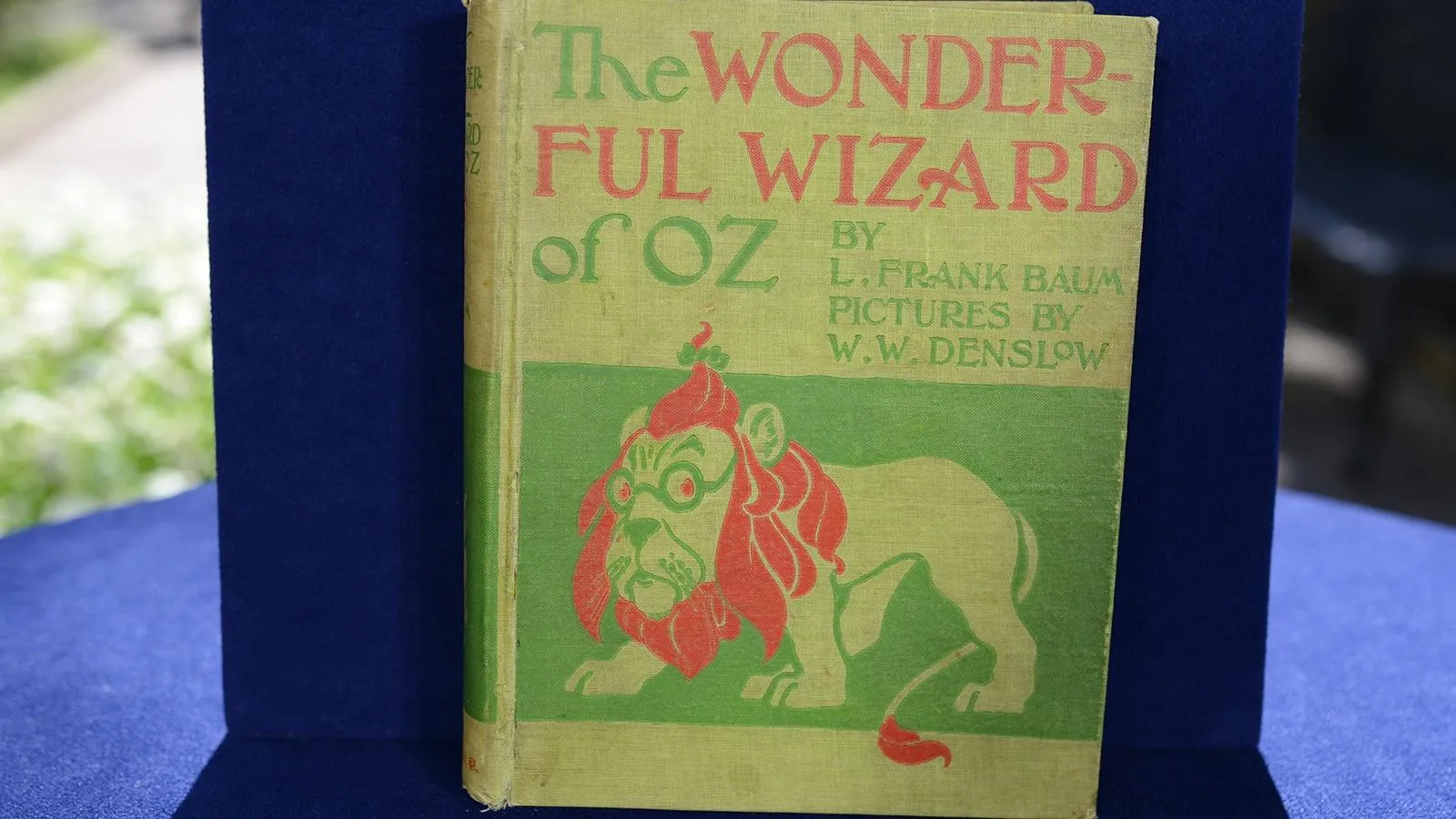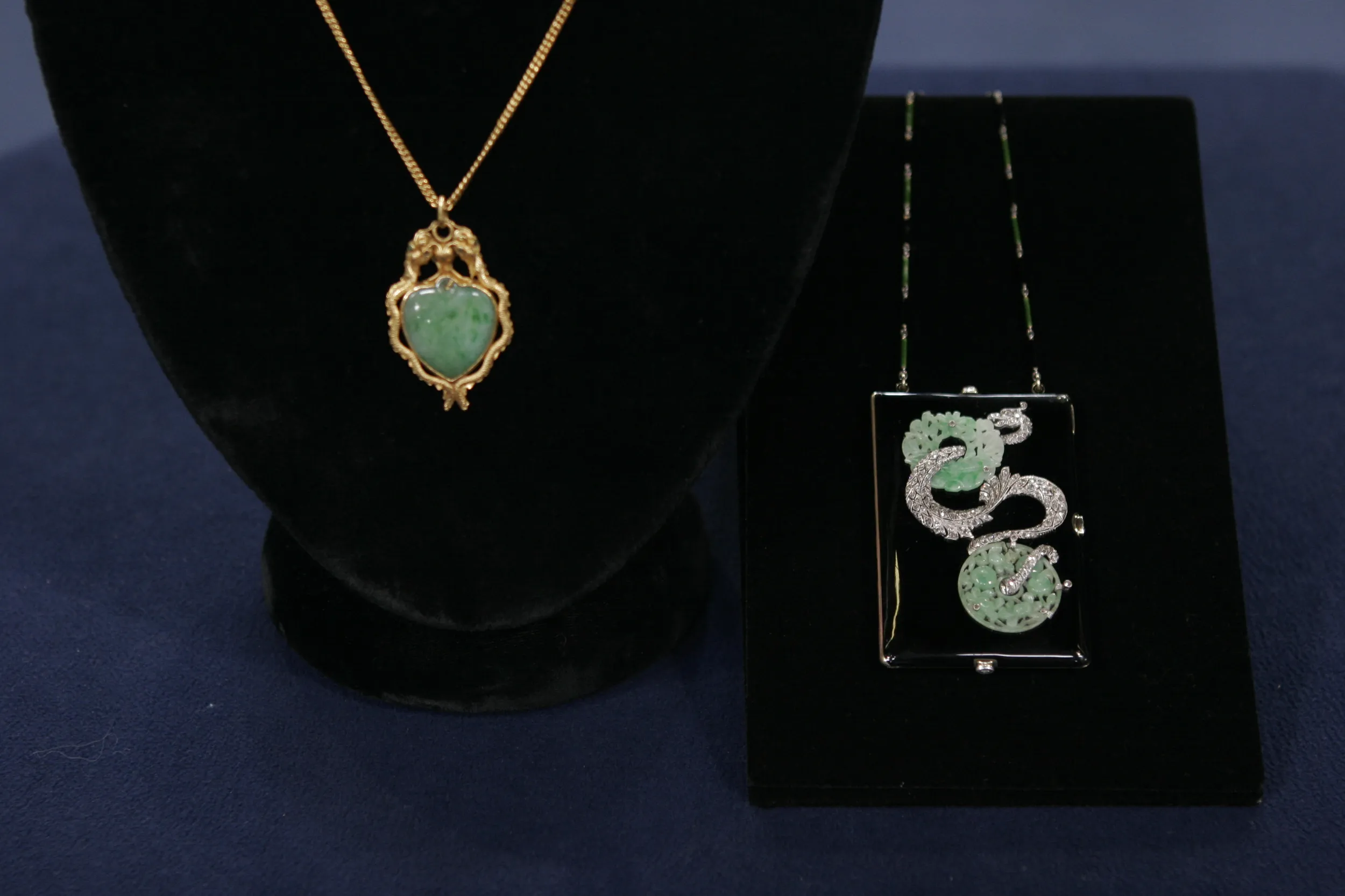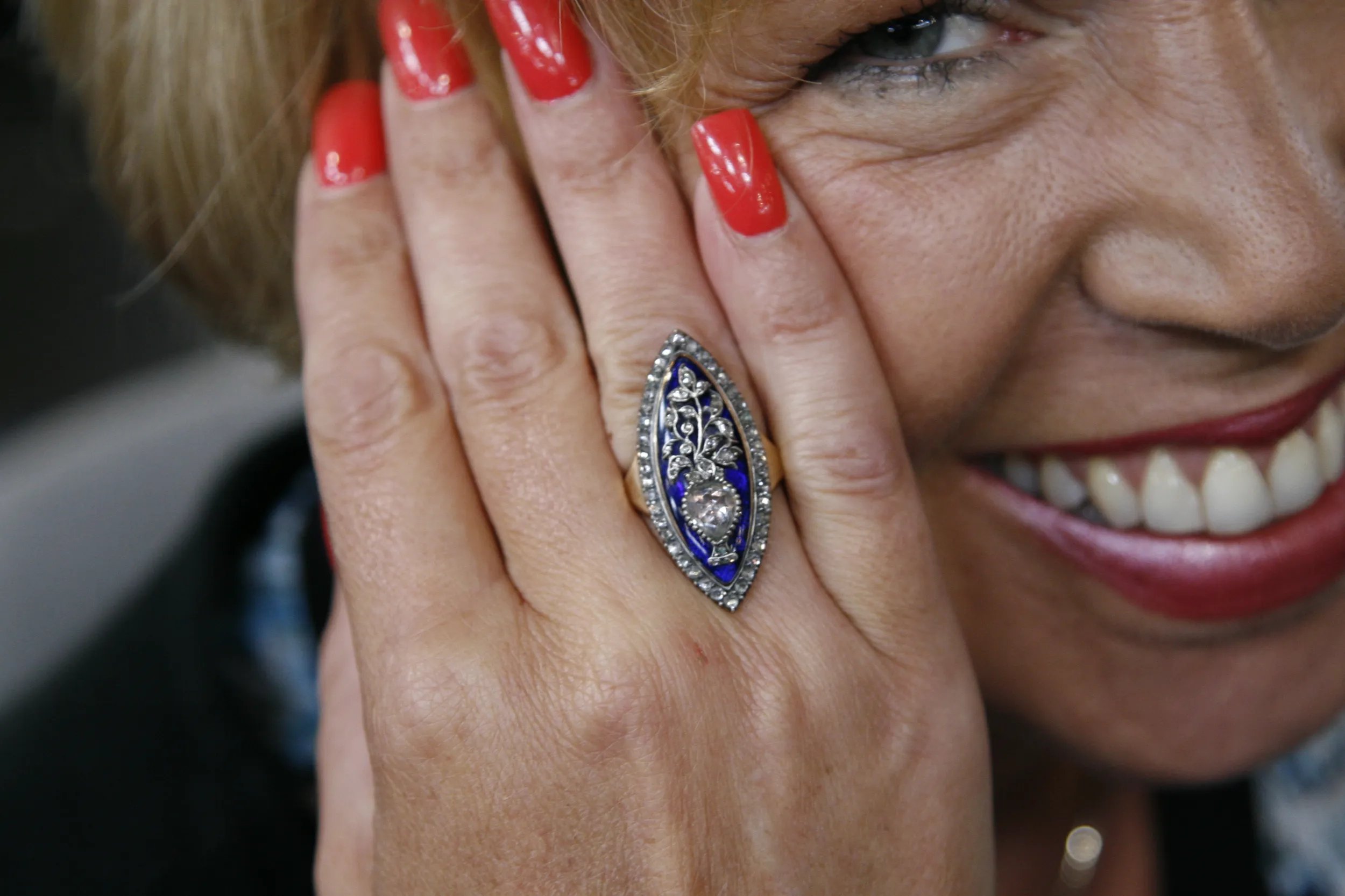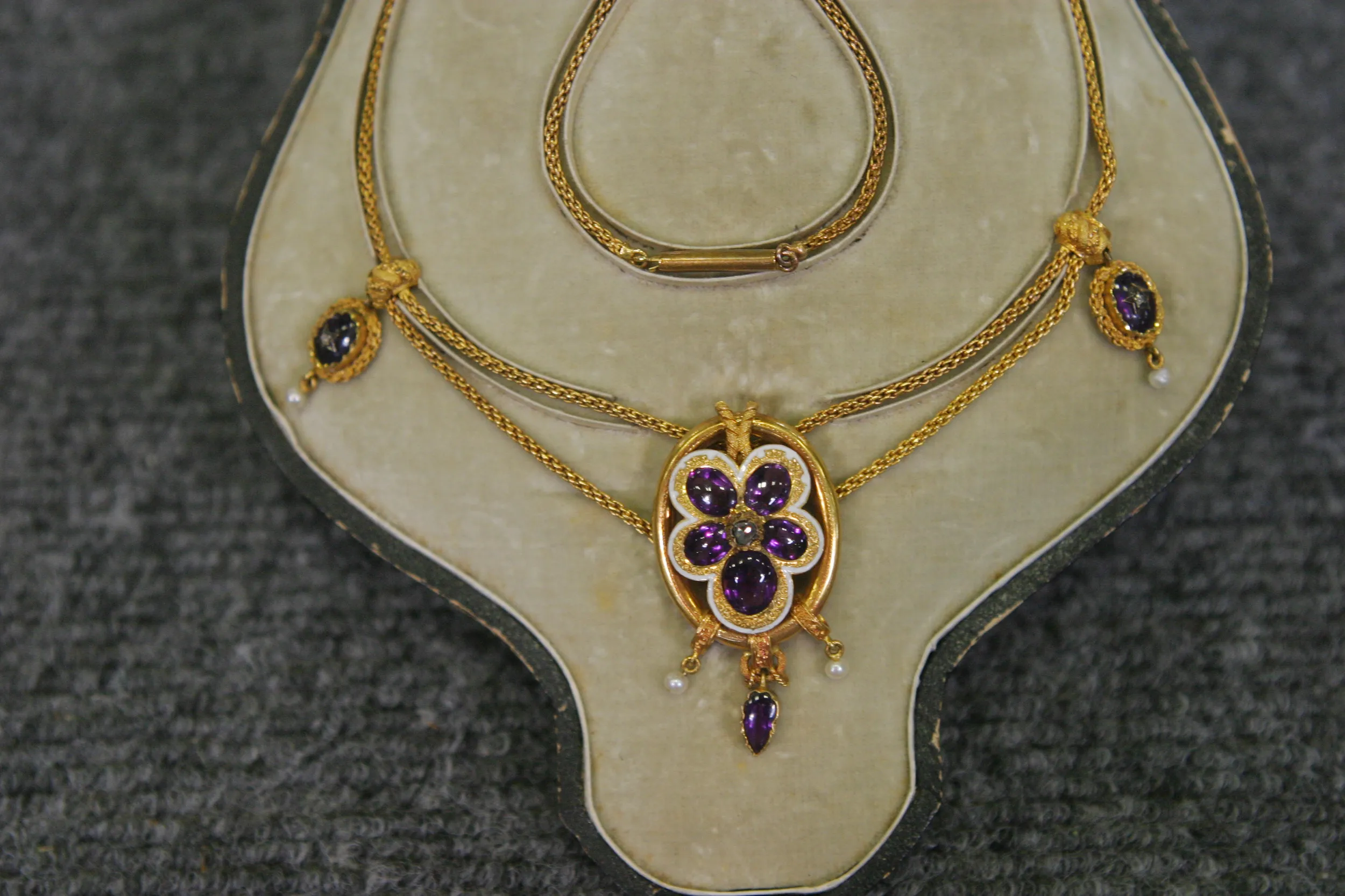GUEST: Well, my mother used to collect loose stones when she traveled around the world, and she was in Australia, and she decided she wanted to buy a black opal while she was there.
APPRAISER: Do you happen to know how much your mother paid for the stone itself in Australia?
GUEST: I have no idea.
APPRAISER: Black opals are great things to have brought back from Australia. They're much more highly valued than white opals. It would be nicer if this stone had little flecks of orange or flecks of red in it-- that would make it even more important.
GUEST: Right.
APPRAISER: But it's still a very pretty stone. What you see from the top here...
GUEST: Mm-hmm.
APPRAISER: Is what we call a ballerina mount.
GUEST: Oh, okay.
APPRAISER: Because, you see the, the undulation of the...
GUEST: Of the tutu.
APPRAISER: Of the diamonds, just like a tutu.
GUEST: (chuckles)
APPRAISER: But this type of mount was, was much more popular later, in the, uh... Sort of in the, in the '60s and '70s, into the '80s.
GUEST: Yeah.
APPRAISER: And that's, that's probably about when she would have had it mounted.
GUEST: Mm-hmm.
APPRAISER: And so, this is probably from the '70s. But these are particularly nice small stones, lot of detailed work.
GUEST: Yeah.
APPRAISER: Really undulates just like the, the tutu in, uh, in motion.
GUEST: A ballerina.
APPRAISER: So I just love the combination. We don't know who actually made it. Unfortunately, it doesn't have everything one wants in a black opal.
GUEST: Mm-hmm.
APPRAISER: Color is almost more important than the size.
GUEST: Yeah.
APPRAISER: Nonetheless, you'd probably have to pay $12,000 to $15,000 in a retail setting...
GUEST: Really?
APPRAISER: To, to buy this one today.
GUEST: Holy Outback! (both laughing)








